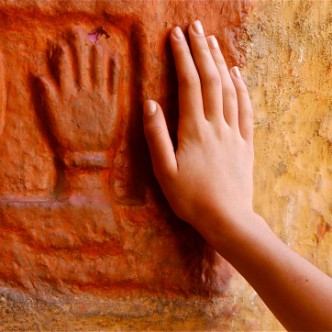
Program
- Nach dir, Herr, verlanget mich
Cantate BWV 150 - Weinen, Klagen, Sorgen, Zagen
Cantate BWV 12 - Jesu, der du meine Seele
Cantate BWV 78
When we associate the Cantor’s name with the chaconne, what immediately comes to mind is the partita in D minor for violin. However, Johann Sebastian Bach also uses this musical form in three of his cantatas.
Originally from South America, the chaconne, a popular dance, is introduced in Spain at the dawn of the 17th century. It is considered light, even “obscene”, some even call it the work of the devil! It is accompanied by the guitar, the tambourine and castanets, and sung with refrains.
It then spreads throughout Europe, evolving into a form with variations based on a basso ostinato. In this form it resembles the passacaglia. In Italy, the chaconne bass gives rise to a number of instrumental or vocal pieces, for example by Monterverdi, Uccellini, Frescobaldi or Falconieri. In France, this dance takes on a dignified and solemn form and occupies a prime position in opera.
In Bach’s chaconnes, it is the French influence that dominates.
In the cantata Jesu, der du meine Seele, composed in Leipzig in 1724, the first movement can be considered a chaconne: triple meter, a dotted crotchet for emphasis on the second beat, a basso ostinato (in two parts, one descending chromatic, the other ascending in breves). A soprano chorale rises above the three other parts of the choir that use both aspects of the bass and abounds with dissonant and poignant passages.
Weinen, Klagen, Sorgen, Zagen (1714) is a work that dates from the Weimar period. After the initial sinfonia concertant with oboe, the first section (repeated later after a more lively passage) progresses with a chaconne bass: four beats in descending chromatic succession. Against this bass, a lamentation in four voices is sung. This chaconne is integrally repeated in the Crucifixus de la Messe in B minor.
The cantata Nach dir, Herr, verlanget mich, cannot be clearly identified as one of the Cantor’s works. The quality of the writing pleads in its favour and it could be the first cantata composed by JS Bach. Ciaconna, the title of the last movement, is a demonstration of Bach’s interest in this dance, with its highly varied movement. After him, the chaconne (or passacaglia) continued to interest composers like Brahms, Webern, Britten, Hindemith etc.
Akadêmia :
4 singers
11 instrumentalists
Françoise Lasserre, conductor